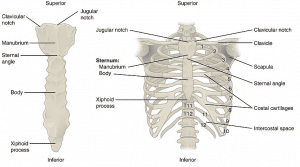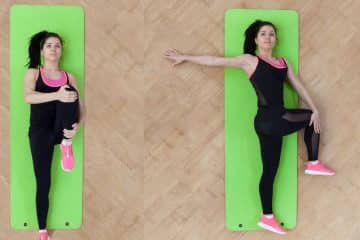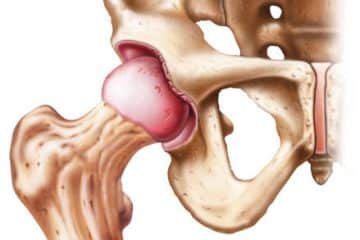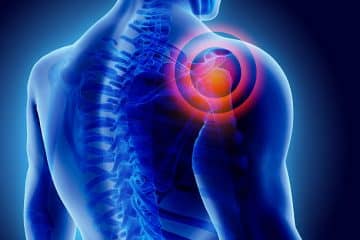Floating (Slipping) rib syndrome
Floating (Slipping) rib syndrome, first mentioned by Edgar Ferdinand Cyriax in 1919, is a rare condition that results from hypermobility of costal cartilage tips.
Neither classification nor the exact cause of this condition is clearly defined.
As a result, slipping rib syndrome goes by many other names, including floating rib syndrome, Cyriax syndrome, clicking rib syndrome, painful rib syndrome, displaced ribs, and interchondral subluxation.
In most cases, ribs from 8th to 10th are affected, but due to the unclear definitions, the twelfth rib syndrome is sometimes referred to as a subtype of slipping rib syndrome. In the article below, we will go through the symptoms, differential diagnosis and treatment options.
Clinically relevant anatomy
The human skeleton usually has 24 ribs, in 12 pairs. Based on articulation they fall into 3 categories:
True ribs (1-7th)- or vertebrosternal ribs, have direct articulation to the sternum
False ribs (8-10th)- or vertebrochondral ribs, are not attached to the sternum, instead, they connect to the costal cartilages of the ribs just above them
Floating ribs (11th and 12th)- or vertebral ribs, usually do not have anterior attachments at all

True ribs are firmly fixed to the place from both sides, hence we do not encounter slipping there. But in the case of false and floating ribs, when interchondral ligaments have increased laxity or are disrupted, cartilage tips can partially dislocate.
The reasons for this may be various, including chest wall traumas, posture abnormalities, previous surgeries, etc.
The slipped rib generally will not cause damage to internal organs but can irritate intercostal nerves, cause inflammation, strain intercostal muscles and cause pain.
Epidemiology and risk factors
As in the case of other uncommon diseases, we lack reliable statistical data about the occurrence of this condition.
Some studies state that around 20-40% of the population encounter this problem in their lifetime, but most cases resolve spontaneously or will not cause symptoms severe enough to grant doctor appointments.
Risk factors for developing this condition include a history of physical trauma. Contact sports athletes, such as wrestlers, football players, etc have higher chances of developing slipped rib syndrome.
Some birth defects, like a bifid rib, and hypermobility have also been linked to slipping rib syndrome development.
Symptoms
Presentation of slipped rib syndrome varies and can be unilateral or bilateral. The main presenting symptoms are sharp, sometimes radiating abdominal and back pain. The duration and nature of this pain also vary.
In some patients, it might be minor, whereas in other clinical scenarios discomfort impacts the quality of life. The duration may vary from several minutes to hours.
Another commonly reported symptom is a characteristic popping sensation when lower ribs subluxate. Coughing, sneezing, stretching, certain postures and movements can aggravate the pain so does pressing on affected ribs.
In twelfth rib syndrome, the pain may be in the groin, flank and loin, as well as in the back and abdomen. Furthermore, during physical examination tenderness is usually located on the tips of the 11th and 12th ribs.
Diagnosis
The diagnosis is clinical and considered a diagnosis of exclusion. The key component is physical examination.
Medical professionals perform the “hooking maneuver”, a procedure that requires hooking the examiner’s fingers under the suspected rib and then raising it in the upward and forward direction. The test is positive when this movement replicates the pain.
Imaging procedures such as X-rays, CT scans or MRI can not help us visualize the affected cartilage, but they are needed to exclude other conditions.
The only imaging technique to evaluate the laxity of cartilage is dynamic ultrasound, however, it offers the same diagnostic accuracy as the hooking maneuver. In both cases, diagnosis is dependent on doctors’ experience and knowledge of this condition.
Differential Diagnosis
Slipping rib syndrome is often confused with other conditions that involve chest wall cartilages, including the already mentioned twelfth rib syndrome. Some researchers classify both syndromes under the “painful rib syndrome” group, others think it’s a separate condition.
Regardless of the classification, these two can be differentiated by pain location,11th and 12th ribs cause pain in the lower back, abdomen and groin and the hooking maneuver is not included in diagnostic criteria.
Tietze syndrome, often confused with this condition, involves swelling of sternocostal, sternoclavicular and costochondral joints, which is not encountered in slipping rib syndrome.
Costochondritis, another differential diagnosis option, is a common condition encountered in ER departments and affects costochondral and sternocostal joints of upper, true ribs, in contrast to slipping rib syndrome, where false ribs are affected.
Treatment
Since we do not know the exact pathophysiology and in some cases, the condition resolves by itself, first-line treatment in almost all cases is conservative measures. Limitation of movement, ice packings, NSAIDs and topical medications are used to deal with pain.
Another option is a nerve-blocking injection, which is used in more severe cases or as an alternative to surgery. This intervention is minimally invasive but temporary and repeated injections are needed.
If the latter two have failed, the only way left is surgery. Commonly used surgical procedures include costal cartilage removal, rib stabilization and rib resection.
Take-home points
Slipping rib syndrome is an underdiagnosed and frequently overlooked condition. Clinical presentation may vary a lot according to the patient. The mainstay of diagnosis is a clinical examination and patient history.
See Also
References:
https://pubmed.ncbi.nlm.nih.gov/
https://link.springer.com/article/
https://pubmed.ncbi.nlm.nih.gov/7383620/


